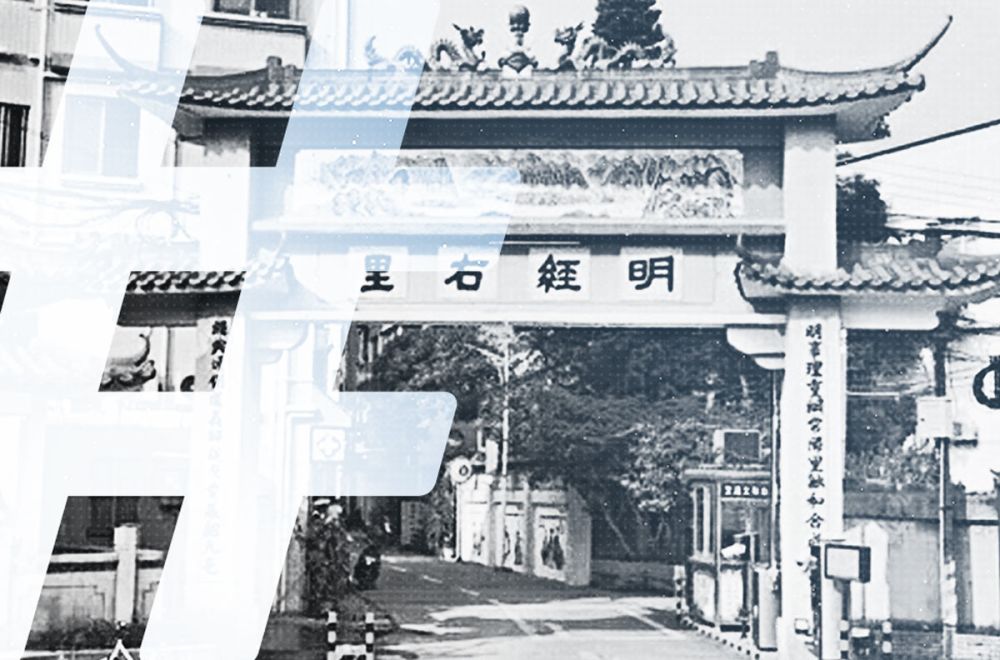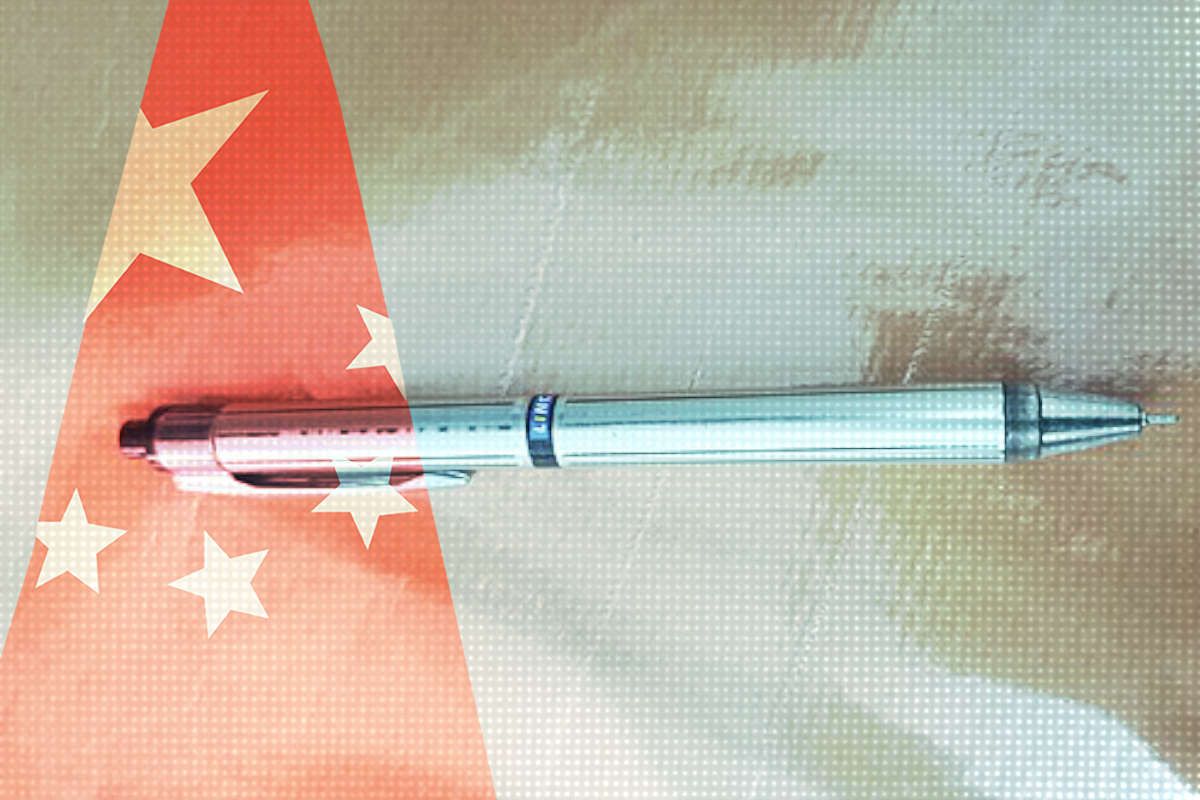Headlines and Hashtags
Hu Jintao reform blueprint defines CCP media control as a key condition of "political reform"

By David Bandurski — It’s purportedly for sale on the Internet at the deal-stealing price of seven dollars. So why is it so impossible to track down a copy of Gongjian: A Report on Political Reform in China After the 17th Party Congress? For starters, the book, purported to be Hu Jintao’s blueprint for political reform, is in high demand among scholars, analysts and journalists. Rumors and conjecture about its existence have been flying ever since last fall’s congress, and everyone is eager to know what it says and what it signifies. [CORRECTION: The book is reportedly now available widely in Beijing bookstores].
A Reuters report last month made passing mention of the book, for which Central Party School vice-director Liu Junru wrote the preface, but offered no details and did not suggest it reflected Hu Jintao’s own views or plans. [CORRECTION: Reuters reporter Chris Buckley did the first detailed report of the study in a February report. See it here.]
The word on the street, though, is that it does.
[ABOVE: Cover of Gongjian: A Report on Political Reform in China After the 17th Party Congress, published by the Xinjiang Production and Building Corps Press in October 2007.]
The report, though circulating among China’s top leadership since last October, has been published by the little-known Xinjiang Production and Building Corps Press, an eccentric choice for such a significant work.
So what has all the quiet fuss been about?
Over the next few weeks, we’ll look more generally at the topic of political reform in China as glimpsed through Gongjian. What sort of path does it blaze? Where does it stand on electoral democracy, intraparty democracy, religious freedom and the growth of civil society?
For the moment, though, we’ll deal more specifically with the media-related portions of the document and how it envisions the role of the press in China.
The report, first of all, is prepared by Zhou Tianyong (周天勇) and Wang Changjiang (王长江), both scholars at China’s Central Party School we mentioned as key figures for journalists to interview in the run up to last year’s Party Congress.
Zhou Tianyong is vice-director of the Research Office of the Central Party School and one of several authors of the Party School’s “Political Reform Research Report” (政治体制改革研究报告), which was published in book form as Political Reform in China in 2004. The preface to Gongjian, written by Li Junru, makes specific mention of the 2004 book.
Wang Changjiang is director of the Central Party School’s Party Building Division (党建部). Wang wrote an essay in May last year called, “Answering a Few Misgivings About Issues Concerning Democracy” (辨析关于民主问题的几个疑虑). Published in Beijing Daily, the article argued that democratization could happen even under a one-party system.
While Gongjian does note in passing in chapter one that “freedom of speech is an inevitable development trend,” it argues that the CCP must continue to control media as a fundamental condition of political reform. Party control of the press, in other words, must remain intact even as the country moves toward so-called “political reform,” or zhengzhi tizhi gaige (政治体制改革).
One of the most revealing formulations employed at the outset of the report is the “three controls,” in which we may be witnessing the birth of a new party catchphrase for the conditions under which the CCP will allow political reform to move ahead, including media control.
Summing up the challenges that will attend efforts at political reform — for example, the party “must eliminate factors of instability that might emerge in the midst of the political reform process, and must ensure that political reform goes ahead step by step and in an orderly manner under the leadership of the CCP” — the authors write:
We must uphold the CCP’s leadership of the political reform process, and we must implement the three controls (三项原则), which are that the party controls the army (党管军队), the party controls cadres (党管干部), and the party controls the press (党管新闻).
Falling back again on the lessons of USSR disintegration, the authors write that “in the 1980s and early 1990s, as the former Soviet Union and eastern Europe underwent dramatic change, there were many reasons that the party of Socialism progressively lost hold of political power, but one important reason was that the ruling party gave up control of the military, with the result that in the moment of truth the army did not heed the words of the party and even stood on the side of the opposition.”
“The ‘control’ in party control of cadres,” the authors write, “should be understood as both control and leadership.” It essentially means that the role of party leaders is to carry out the policies and work of the party, and be obedient to the party line. “In this way, party control of cadres means that the party leads the work of cadres.” And: “For the Chinese Communist Party, party control of cadres is undebatable.”
Then comes the chapter one section on the press control aspect of the “three controls”:
Party control of the press. The press sytem is an important and integral part of the national political system. Freedom of speech is an inevitable development trend. But in the period of social and economic transition, the question of what function the press should have becomes for us a question that must be met with extreme caution. We believe that when a market economy system is not yet mature, and when the nation’s political culture and the democratic character [of the population] continue to show a marked gap with developed nations, a one-sided emphasis on freedom of speech could potentially create chaos in public opinion, which would be disadvantageous to the stable achievement of transition of the social and economic systems under a situation of centralized political control. Therefore, the party’s leadership and control of the press system is necessary for the stable transition of the social and economic systems, and an important integral component suited to a centralized political system.
The fear, an all-too-familiar one, is that political reform might unleash demands for greater political freedoms and bring the kind of social chaos we saw in the spring of 1989. Hence the imperative, from the CCP’s vantage point, of controlling or “guiding” public opinion by means of press control.
On pages 65 through 67 of the report, in a section called “Improving the Ruling Party’s Influence on the Media,” the authors write that “there are two primary avenues by which the ruling party can influence the media: the first is to control, the second is to use” (一是控制, 二是利用).
The second aspect of this formula is a testament to the priority the CCP now places on finding new ways to “use” and “influence” media as opposed to the old emphasis on “control” (for which “guidance” has been the operating term since 1989).
With a tinge of alarm, the report cites the recent history of “color revolutions” in Eastern Europe and Central Asia as urgent lessons in the growing power of media as a vehicle of popular participation in political affairs, a challenge to the party’s leadership:
Traditionally, political parties were the most important tools for the people to express their interests, hopes and expectations. Now, media have also emerged as a tool for political participation, and have played a role of ever-growing importance. This means that the things people accomplished in the past predominantly through political parties they can now accomplish through media channels. As a result, the influence of the ruling party faces [new] challenges. This is especially the case with the development of the Internet and technology, which has not only broken through the monopoly of information by restricted to certain levels of society, but has also broken through national boundaries as restrictions on the dissemination of information, actually usurping a number of roles political parties played in the past. Many members of society no longer view participation of political parties as the only channel for obtaining information . . . People have seen that when media play an independent role they can even have a substantial impact on politics. For example, while the ‘color revolutions’ occurring in Eastern Europe and Central Asia in recent years have complex causes, the control of the media and public opinion is a factor that cannot be overlooked. All of this has meant that the traditional mode of participating in politics via the political party faces many new problems. Faced with the immense utility of the media, nations across the world are all seeking policies for dealing with this issue, striving to enhance their influence on the media. Summed up, there are two primary avenues by which the ruling party can influence the media: the first is to control, the second is to use.
As many of our analyses at CMP attest, China’s media landscape has changed over the last two decades, the CCP’s regime of media control notwithstanding. The complexities of media commercialization, growing journalistic professionalism and the rise of the Internet and other new technologies have demanded the party change its approach to public opinion control.
An important part of this change in recent years has been an intensified focus on “using” media, including the Internet, to further the party’s interests rather than employing a one-dimensional control approach.
It’s not enough, in other words, to silence voices the party views as unfavorable — the party must find new ways to get its message out in an increasingly competitive, market-oriented media environment.
As we’ve written elsewhere, the CCP views media development as a critical factor in a global war for public opinion.
Likewise, many CCP leaders have come to regard “Western” media as pawns working for the interests of Western governments in spreading their ideology and influence — hence the party’s obsession with “color revolutions” and the role of the press.
This is a tactic and/or position we’ve seen frequently in recent weeks, as China has turned its own press apparatus against foreign media.
It was no surprise, therefore, as China’s foreign ministry turned on CNN for comments made by Jack Cafferty, that Chinese media coverage included comments from “famous American scholar” F. William Engdahl alleging that March chaos in Tibet was the “latest ‘color revolution’ cooked up by Washington.” [Xinhua News Agency: “CNN, Cafferty need to make a sincere apology to the Chinese people.”]
Most readers would probably think it fantastical to relate the controversial comments of a single pundit on one major news network to a supposed “color” conspiracy against China’s ruling party. But for China’s leadership this thesis has become a matter of faith and policy in the last few years.
For the authors of Gongjian, the recent history of “color revolutions” in Eastern Europe and Central Asia is a lesson in the dangers of freer media, and it underpins the CCP’s determination to “control” and “use” the press.
The reform document suggests control will continue to be the party’s guiding principle for media policy for years to come, that a change in the role of the press is not in the cards even as the party pushes ahead with “political reform.”
Gongjian does make other statements about the need for media development, “supervision by public opinion” and the creation of a press law. Look for more about these topics in a future post.
[Posted by David Bandurski, April 18, 2008]





















